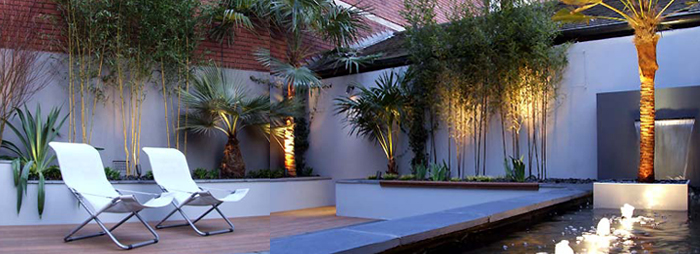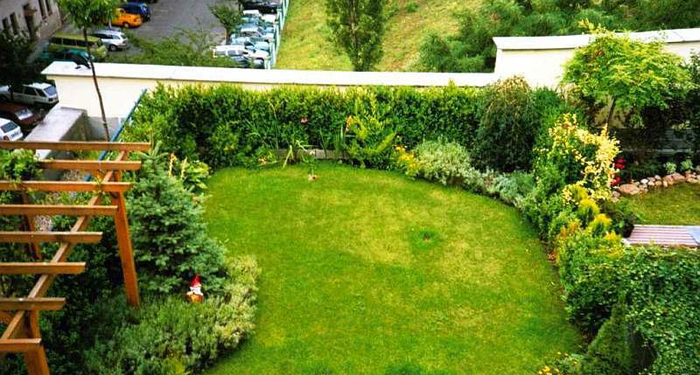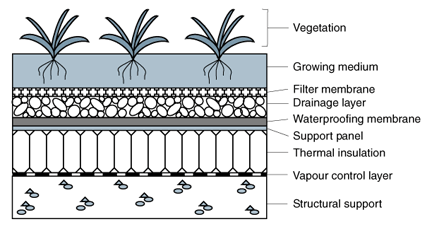
A roof garden is any garden on the roof of a building. Humans have grown plants atop structures since antiquity. Besides the decorative benefit, roof plantings may provide food, temperature control, architectural enhancement, and recreational opportunities. Available gardening areas in cities are often seriously lacking, which is likely the key impetus for many roof gardens. The garden may be on the roof of an autonomous building which takes care of its own water and waste. Hydroponics and other alternative methods can expand the possibilities of roof top gardening by reducing, for example, the need for soil or its tremendous weight. Plantings in containers are used extensively in roof top gardens.
Green Roof Basics
In the simplest terms, a green roof is plants on top of a roof. Also known as a rooftop garden, a green roof typically consists of the following components: an insulation layer, a waterproof membrane to protect the building from leaks, a root barrier to prevent roots from penetrating the waterproof membrane; a drainage layer, usually made of lightweight gravel, clay, or plastic; a geotextile or filter mat that allows water to soak through but prevents erosion of fine soil particles; a growing medium; plants; and, sometimes, a wind blanket.

Green roofs improve air quality, conserve energy, reduce stormwater runoff and help reduce the urban heat island effect. The garden’s plants reflect heat, provide shade and help cool the surrounding air through evapotranspiration, which occurs when plants secrete or “transpire” water through pores in their leaves. The water draws heat as it evaporates, cooling the air in the process. Plants also filter the air, which improves air quality by using excess carbon dioxide to produce oxygen.

There are two basic types of green roofs: intensive and extensive. Intensive green roofs require a minimum of one foot of soil depth to create a more traditional rooftop garden, with large trees, shrubs and other manicured landscapes. They are multi-layer constructions with elaborate irrigation and drainage systems. Intensive green roofs add considerable load to a structure and require intensive maintenance. In contrast, extensive green roofs range from as little as 1 to 5 inches in soil depth, adding less load to a building. Extensive green roof systems also generally require less maintenance than intensive systems. Some green roof designs incorporate both intensive and extensive elements.



Condition of the Roof – In general, the most cost-effective time to construct a rooftop garden is when the roof needs to be replaced or newly constructed. However, some types of green roofs can be installed on existing roofs.
Structural Capacity of the Roof – Prior to designing and constructing your rooftop garden, you must first determine if your roof can support the additional weight of soil and plants. A licensed structural engineer or architect must be hired to conduct a structural analysis. The structural capacity largely will dictate the type of rooftop garden that you can build. If your structural capacity is sufficient, you will need to obtain the proper permits before proceeding.
Access to the Roof – Consider what kind of access to the roof will be needed during and after the rooftop garden is installed.
Cost – In addition to the cost of structural analysis, your construction budget should include any needed structural or safety improvements, irrigation systems, garden materials, maintenance costs, transportation and fees associated with any ongoing professional assistance and permits.
 Irrigation – Landscaping with native plants is an environmentally-beneficial garden design. Still, you should plan for the need to supplement rainfall with irrigation. You will need to hire a licensed plumber or irrigation contractor to design and install an irrigation system or new water connection on your roof.
Irrigation – Landscaping with native plants is an environmentally-beneficial garden design. Still, you should plan for the need to supplement rainfall with irrigation. You will need to hire a licensed plumber or irrigation contractor to design and install an irrigation system or new water connection on your roof.
Drainage – A key environmental benefit of rooftop gardens is that they absorb rainwater and reduce runoff to sewer systems. Still, any excess water not absorbed within the garden must be effectively drained from the rooftop. Most gardens should be able to use the existing rooftop drainage system with only minor modifications.
Rooftop Garden Construction – Typically, a green roof begins with an insulation layer, a waterproof membrane to protect the building from leaks, and a root barrier to prevent roots from penetrating the waterproof membrane.
A drainage layer, usually made of lightweight gravel, clay, or plastic is next. The drainage layer keeps the growing media aerated in addition to taking care of excess water. Since a green roof system covers the entire roof, drainage points must be accessible from above for maintenance purposes. On top of the drainage layer, a geotextile or filter mat allows water to soak through but prevents erosion of fine soil particles. Finally, the top layers consist of growing media, plants, and a wind blanket. The growing media is lightweight material that helps with drainage while providing nutrients to the plants. A wind blanket is used to keep the growing media in place until the roots of the plants take hold.

The City Hall rooftop garden sits atop Chicago’s City Hall, The 20,300 square foot City Hall rooftop garden has 20,000 plants of more than 150 varieties including 100 shrubs, 40 vines and 2 trees. The plants were selected for their hardiness on a roof, where wind and watering are two challenges. The plants require little water and can survive Chicago’s seasons. Most are native to the region. This low-maintenance garden relies on a special blend of compost, mulch, and sponge-like ingredients that weighs less than regular topsoil and retains more water. When the Department of Environment (DOE) was considering plants for City Hall’s Rooftop Garden, they took into consideration the hostile growing environment and the plants that would best survive the varied elements. Plants appropriate for extensive green roofs usually favor poor soils. Also, the windy conditions would increase the loss of moisture from growing media and leaves, so drought-tolerant plants often survive best. Department of Environment found that many plants, especially native varieties, were suitable and attractive options for our rooftop garden.
